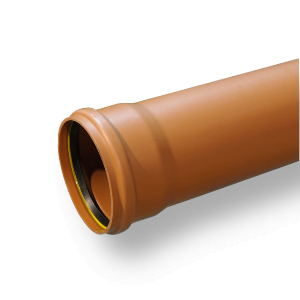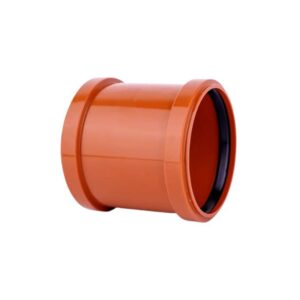No products in the basket.
Blog
Foul Water Drainage & Surface Water Drainage: What’s the Difference?
What’s the difference between Foul Water Drainage and Surface Water Drainage?
Properties generally produce two different kinds of water into the surrounding drainage. Firstly, there’s foul water drainage – that’s the waste that’s produced by sinks, toilets, washing machines, and so on (also known as Grey Water). In addition to foul water, there’s also surface water (also known as Storm Water) – generally, that’s the water that’s collected in your gutters and drainage around the house, such as from a channel drain when it rains.
Now, you could be forgiven for thinking that both types of water run into the drainage system and get handled in the same way – but they don’t. In fact, the rules for foul water drainage and surface water drainage are quite different – and it’s useful to know those differences.
Here, we’ve looked at foul water drainage and surface drainage in a little more detail – including how each type of waste water is defined, how they need to be handled, the rules and regulations that surround a property’s drainage system, and a few things that can go wrong that can lead to water drains getting mixed up.
Need some water drainage support?
Before we get started, it’s important to remember that we’re just a call, email, or instant message away if you need expert advice around any part of the drainage or water system in your home. Whether you’re browsing products and you’re not sure which to use – or you’re halfway through a project and need some advice, we’re always happy to help.
What is foul water?
Foul water is, potentially, heavily contaminated. According to the government’s ‘Drainage and waste disposal’ statutory guidance (Building Regulations, Part H) – it’s defined as:
- Waste from a sanitary convenience, bidet or appliance used for washing receptacles for foul waste; or
- Water which has been used for food preparation, cooking or washing.
Foul waste can be produced by a range of appliances and systems in a property:
- Toilets
- Sinks
- Baths
- Showers
- Washing machines
- Dishwashers
Since this water is potentially contaminated with effluent, chemicals, or other harmful pollutants, it is usually directed through the main sewer network to a sewage treatment plant. In properties that aren’t connected to mains drainage, it’s discharged into a septic tank, private wastewater treatment plant, or a cesspit.
What is surface water?
In this context, surface water is generally the rain that your property collects.
In rural areas, a lot of rainwater drains naturally into the ground – although in more urban areas, it’s collected by drains and directed into natural watercourses – like rivers, streams, or even the sea.
Of course, since surface water hasn’t been used in a property, it’s not contaminated. This means it doesn’t need to be handled and cleaned by treatment plants. Instead, it’s considered perfectly safe to be directed back into soakaway drains and dispersed into the natural drainage in the area.
Technical terms and names
The names given to the drainage pipe and pipework that make up foul drainage depend based on where they are.
If the pipes are above ground, you’ll generally find they’re referred to as ‘sanitary pipework’ – but everything underground is referred to as ‘foul drains’ or ‘foul sewers’.
Don’t worry though; no one will look at your blankly if you refer to a sanitary pipe or vent pipe as foul pipes – it’s just worth knowing if you find yourself exploring the legal terms in building regs guides and paperwork.
As a general rule, a sewer pipe will be terracotta in colour, where as a grey water of surface water may be black (or even grey or white if above ground).
Rules and regulations
As previously mentioned, foul and surface water are both covered in Part H of government Building Regulations – section H1 covers foul water drainage specifically, and section H3 covers rainwater drainage. Due to its polluting nature, a larger emphasis is put on how foul discharge is handled, as opposed to cleaner surface drainage.
Building regulations set out an ‘order of priority’ for how waste should be directed. According to these regulations, the property owner should try to connect their drainage to the first possible choice from the following list of options:
- The public sewer
- A private sewer which then connects to a public sewer
- A septic tank or wastewater treatment plant on the premises
- A cesspit
Why is it important to keep foul water and surface water drainage systems separate?
Since we’ve talked about how surface water will generally drain away into a river, stream, or other watercourse, it’s probably obvious why fluid contaminated with effluent and/or chemical waste shouldn’t take the same route.
The implications of contaminating a watercourse are extremely serious. As well as the impact on the environment – a person or company tried and convicted of a pollution offence can face an uncapped fine and, in extreme cases, could even face a custodial sentence.
Of course, it’s not just pollutants entering a surface water sewer that’s a problem. When surface water drains into foul water systems, the drainage and sewers can be quickly overcome – potentially leading to hazardous flooding. It can also cause issues at the sewage treatment facilities as it can flood them and cause an overspill, which usually would mean untreated foul water being discharged into a public watercourse or the sea. Underground sewer pipe comes in a few different sizes the mains ones being 110mm and 160mm drainage pipe.
Why do surface and foul water drainage become mixed?
Sometimes, a foul water drainage and a surface drainage system become mixed through no fault of the property’s current occupants. Many older homes have combined foul and surface water underground drainage systems – sending wastewater through the same pipe into the mains sewer.
There’s also a chance that building work can lead to mix-ups with foul and surface water sewers too – with misconnections often at fault when the wrong kind of wastewater is routed through the property’s drains.
If this is the case in your property, don’t panic – you’re certainly not going to have environmental health knocking at your door demanding access to your drain covers and inspection chambers! That said, it could be something worth looking into and having fixed if possible.
Foul water drainage products
Now we’ve covered some of the important information behind foul and surface drainage – it’s worth taking a closer look at the kind of products we stock that will be useful if you’re planning installing or overhauling your drainage system.
Sanitary pipework
Items like bottle traps, waste traps, waste pipes and overflow pipes all make up the pipework that takes foul water out of your home. When it’s on the outside of the property, it then becomes a soil pipe stack which connects the various outlets in your home and directs the flow towards the sewer. A soil pipe stack is generally made up of actual lengths of soil pipe, junctions, and the fittings required to secure them.
Buildings regulations also stipulate that a soil stack design must be ‘vented’ too – which essentially means any gasses or odours created must be allowed to escape somewhere fairly clear of surrounding windows or doors. This is usually a dedicated vent pipe the sits above the roofline, covered with a protective cowl (usually at least 5m away from any roof or window).
Ultimately, the soil stack will connect to the local mains sewer (underground) drains, carrying sewage away from the site.
On-site sewage treatment
Somewhere around 4-5% of UK properties have an off-mains drainage system – which means it’s impossible or impractical to connect them to the mains system. 4-5% might not sound like a huge number – but in reality, that’s somewhere in the region of one million homes – and that’s without considering rural business properties.
For people with homes like these, some kind of on-site storage or treatment is essential. Septic tanks are a popular solution – but an increasing number of larger properties are opting for their own sewage treatment plants; a very small version of a mains provision.
Drainage system question? We’re here to help!
From pan connectors to sewage treatment plants and septic tanks, we know waste water products inside out – so if you need any help selecting the right product for your project, we can help.
If you’ve got a question about any of our drainage systems range, feel free to call, email, or connect using our instant messenger service.
Author Bio
Nathan Wilde
Nathan has been in the drainage and plastics industry for over 12 years. Having worked for both builders’ merchants and major manufacturers Nathan has gained a significant amount of industry and product knowledge. Now at EasyMerchant Nathan has dedicated himself to making trade’s people’s lives easier.











How can I stop my millionaire neighbour (property rented out) discharging his overflow sewage tank, into a cesspit in his wood on my boundary, which then floods onto me for the last 10 years, killing everything fruit trees, bluebells, over-running my pond, killing fish, rotting my fence posts, causing ground to sink, killing large areas of lawn, ground flooded with overflow sewage for over 3 months this year. Farmer owns circa 3 acres plus wood next door and yet he will not take action to stop this. Council will not help, environment agency will not help. I am retired and on my own and am at my wit’s end as to how to proceed.
What should I do if a builder paid to install drainage for a patio connects rainwater and sends it into my foul water supply drain?
Learnt a lot
What should I do if the plumber combined surface and foul water?
Is there a rule of thumb for what the foul sewer takes to what a storm sewer takes. My assumption is that a storm water sewer takes more, but by how much? IE a foul takes 1 litre for every 10litres in a storm sewer Just interested in what’s under the ground and how it works
Knowing that a foul sewer shared by more than one property is a Public Sewer, does the same rule apply to storm drainage ?
According to Ofwat, most rainwater drainage is owned by the ten water and sewerage companies in England and Wales. Therefore, responsibility for removing and processing the rainwater that drains into a public sewer falls to these companies. If you have an issue with one of these systems, we advise contacting your local water company and informing them of this so that they are able to make any necessary repairs.